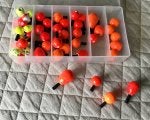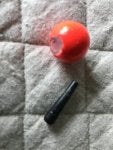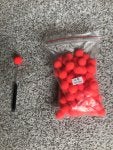I'm wondering what our resident indicator devotees like to use while using the quick release indicators while deep fishing.
Knotless level leader?
Hand tied blood knot tapered?
Store bought tapered leader?
It seems with blood knots in the leader the indicator and peg get hung up on the knots and won't slide down to the fish.
What diameter or pound test do most attach to the fly line?
Obviously large diameters knotted together make large knots that won't slide through the indicator.
I've drilled out my pegs to allow for bigger knots which has helped some.
I eagerly await the fountain of knowledge about to spew forth that may momentarily divert our attention
back to why we actually belong to the WFF forum in the first place.
Thanks, stay safe and stay home please.
Knotless level leader?
Hand tied blood knot tapered?
Store bought tapered leader?
It seems with blood knots in the leader the indicator and peg get hung up on the knots and won't slide down to the fish.
What diameter or pound test do most attach to the fly line?
Obviously large diameters knotted together make large knots that won't slide through the indicator.
I've drilled out my pegs to allow for bigger knots which has helped some.
I eagerly await the fountain of knowledge about to spew forth that may momentarily divert our attention
back to why we actually belong to the WFF forum in the first place.
Thanks, stay safe and stay home please.







